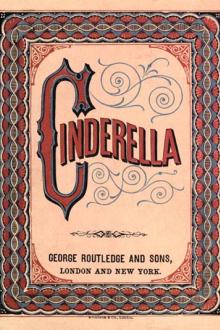The Crown of Wild Olive by John Ruskin (a court of thorns and roses ebook free .TXT) 📕

Read free book «The Crown of Wild Olive by John Ruskin (a court of thorns and roses ebook free .TXT) 📕» - read online or download for free at americanlibrarybooks.com
- Author: John Ruskin
- Performer: -
Read book online «The Crown of Wild Olive by John Ruskin (a court of thorns and roses ebook free .TXT) 📕». Author - John Ruskin
So that you see our task will involve the immediate inquiry what the things are of which the imitation is justly pleasant to us: what, in few words,—if we are to be occupied in the making of graven images—we ought to like to make images of. Secondly, after having determined its subject, what degree of imitation or likeness we ought to desire in our graven image; and lastly, under what limitations demanded by structure and material, such likeness may be obtained.
These inquiries I shall endeavour to pursue with you to some practical conclusion, in my next four lectures, and in the sixth, I will briefly sketch the actual facts that have taken place in the development of sculpture by the two greatest schools of it that hitherto have existed in the world.
27. The tenor of our next lecture then must be an inquiry into the real nature of Idolatry; that is to say, the invention and service of Idols: and, in the interval, may I commend to your own thoughts this question, not wholly irrelevant, yet which I cannot pursue; namely, whether the God to whom we have so habitually prayed for deliverance "from battle, murder, and sudden death," is indeed, seeing that the present state of Christendom is the result of a thousand years' praying to that effect, "as the gods of the heathen who were but idols;" or whether—(and observe, one or other of these things must be true)—whether our prayers to Him have been, by this much, worse than Idolatry;—that heathen prayer was true prayer to false gods; and our prayers have been false prayers to the True One.
[107] I had a real ploughshare on my lecture table; but it would interrupt the drift of the statements in the text too long if I attempted here to illustrate by figures the relation of the coulter to the share, and of the hard to the soft pieces of metal in the share itself.
[108] A sphere of rock crystal, cut in Japan, enough imaginable by the reader, without a figure.
[109] One of William Hunt's peaches; not, I am afraid, imaginable altogether, but still less representable by figure.
[110] The crystal ball above mentioned.
[111] All grandest effects in mouldings may be, and for the most part have been, obtained by rolls and cavettos of circular (segmental) section. More refined sections, as that of the fluting of a Doric shaft, are only of use near the eye and in beautiful stone; and the pursuit of them was one of the many errors of later Gothic. The statement in the text that the mouldings, even of best time, "have no real relation to construction," is scarcely strong enough: they in fact contend with, and deny the construction, their principal purpose seeming to be the concealment of the joints of the voussoirs.
[112] Some of the most precious work done for me by my assistant Mr. Burgess, during the course of these lectures, consisted in making enlarged drawings from portions of photographs. Plate III. is engraved from a drawing of his, enlarged from the original photograph of which Plate I. is a reduction.
LECTURE II. IDOLATRY. November, 1870.28. Beginning with the simple conception of sculpture as the art of fiction in solid substance, we are now to consider what its subjects should be. What—having the gift of imagery—should we by preference endeavour to image? A question which is, indeed, subordinate to the deeper one—why we should wish to image anything at all.
29. Some years ago, having been always desirous that the education of women should begin in learning how to cook, I got leave, one day, for a little girl of eleven years old to exchange, much to her satisfaction, her schoolroom for the kitchen. But as ill fortune would have it, there was some pastry toward, and she was left unadvisedly in command of some delicately rolled paste; whereof she made no pies, but an unlimited quantity of cats and mice.
Now you may read the works of the gravest critics of art from end to end; but you will find, at last, they can give you no other true account of the spirit of sculpture than that it is an irresistible human instinct for the making of cats and mice, and other imitable living creatures, in such permanent form that one may play with the images at leisure.
Play with them, or love them, or fear them, or worship them. The cat may become the goddess Pasht, and the mouse, in the hand of the sculptured king, enforce his enduring words "ες εμε τις ορεων ευσεβης εστω;" but the great mimetic instinct underlies all such purpose; and is zooplastic,—life-shaping,—alike in the reverent and the impious.
30. Is, I say, and has been, hitherto; none of us dare say that it will be. I shall have to show you hereafter that the greater part of the technic energy of men, as yet, has indicated a kind of childhood; and that the race becomes, if not more wise, at least more manly,[113] with every gained century. I can fancy that all this sculpturing and painting of ours may be looked back upon, in some distant time, as a kind of doll-making, and that the words of Sir Isaac Newton may be smiled at no more: only it will not be for stars that we desert our stone dolls, but for men. When the day comes, as come it must, in which we no more deface and defile God's image in living clay, I am not sure that we shall any of us care so much for the images made of Him, in burnt clay.
31. But, hitherto, the energy of growth in any people may be almost directly measured by their passion for imitative art; namely, for sculpture, or for the drama, which is living and speaking sculpture, or, as in Greece, for both; and in national as in actual childhood, it is not merely the making, but the making-believe; not merely the acting for the sake of the scene, but acting for the sake of acting, that is delightful. And, of the two mimetic arts, the drama, being more passionate, and involving conditions of greater excitement and luxury, is usually in its excellence the sign of culminating strength in the people; while fine sculpture, requiring always submission to severe law, is an unfailing proof of their being in early and active progress. There is no instance of fine sculpture being produced by a nation either torpid, weak, or in decadence. Their drama may gain in grace and wit; but their sculpture, in days of decline, is always base.
32. If my little lady in the kitchen had been put in command of colours, as well as of dough, and if the paste would have taken the colours, we may be sure her mice would have been painted brown, and her cats tortoise-shell; and this, partly indeed for the added delight and prettiness of colour itself, but more for the sake of absolute realization to her eyes and mind. Now all the early sculpture of the most accomplished nations has been thus coloured, rudely or finely; and, therefore, you see at once how necessary it is that we should keep the term "graphic" for imitative art generally; since no separation can at first be made between carving and painting, with reference to the mental powers exerted in, or addressed by, them. In the earliest known art of the world, a reindeer hunt may be scratched in outline on the flat side of a clean-picked bone, and a reindeer's head carved out of the end of it; both these are flint-knife work, and, strictly speaking, sculpture: but the scratched outline is the beginning of drawing, and the carved head of sculpture proper. When the spaces enclosed by the scratched outline are filled with colour, the colouring soon becomes a principal means of effect; so that, in the engraving of an Egyptian-colour bas-relief (S. 101), Rosellini has been content to miss the outlining incisions altogether, and represent it as a painting only. Its proper definition is, "painting accented by sculpture;" on the other hand, in solid coloured statues,—Dresden china figures, for example,—we have pretty sculpture accented by painting; the mental purpose in both kinds of art being to obtain the utmost degree of realization possible, and the ocular impression being the same, whether the delineation is obtained by engraving or painting. For, as I pointed out to you in my fifth lecture, everything is seen by the eye as patches of colour, and of colour only; a fact which the Greeks knew well; so that when it becomes a question in the dialogue of Minos, "τινι οντι τη οπσει ὁραται τα ὁωμενα," the answer is "αισθησει ταυτη τη δια των οφθαλμων δηλοιση ἡμιν τα χρωματα."—"What kind of power is the sight with which we see things? It is that sense which, through the eyes, can reveal colours to us."
33. And now observe that while the graphic arts begin in the mere mimetic effort, they proceed, as they obtain more perfect realization, to act under the influence of a stronger and higher instinct. They begin by scratching the reindeer, the most interesting object of sight. But presently, as the human creature rises in scale of intellect, it proceeds to scratch, not the most interesting object of sight only, but the most interesting object of imagination; not the reindeer, but the Maker and Giver of the reindeer. And the second great condition for the advance of the art of sculpture is that the race should possess, in addition to the mimetic instinct, the realistic or idolizing instinct; the desire to see as substantial the powers that are unseen, and bring near those that are far off, and to possess and cherish those that are strange. To make in some way tangible and visible the nature of the gods—to illustrate and explain it by symbols; to bring the immortals out of the recesses of the clouds, and make them Penates; to bring back the dead from darkness, and make them Lares.
34. Our conception of this tremendous and universal human passion has been altogether narrowed by the current idea that Pagan religious art consisted only, or chiefly, in giving personality to the gods. The personality was never doubted; it was visibility, interpretation, and possession that the hearts of men sought. Possession, first of all—the getting hold of some hewn log of wild olive-wood that would fall on its knees if it was pulled from its pedestal—and, afterwards, slowly clearing manifestation; the exactly right expression is used in Lucian's dream,—Φειδιας εδειξε τον 916()#;ια; "Showed[114] Zeus;" manifested him, nay, in a certain sense, brought forth, or created, as you have it, in Anacreon's ode to the Rose, of the birth of Athena herself—
κορυφης εδεικνυε Ζευς.
But I will translate the passage from Lucian to you at length—it is in every way profitable.
35. "There came to me, in the healing[115] night, a divine dream, so clear that it missed nothing of the truth itself; yes, and still after all this time, the shapes of what I saw remain in my sight, and the sound of what I heard dwells in my ears"—note the lovely sense of εναυλος—the sound





Comments (0)